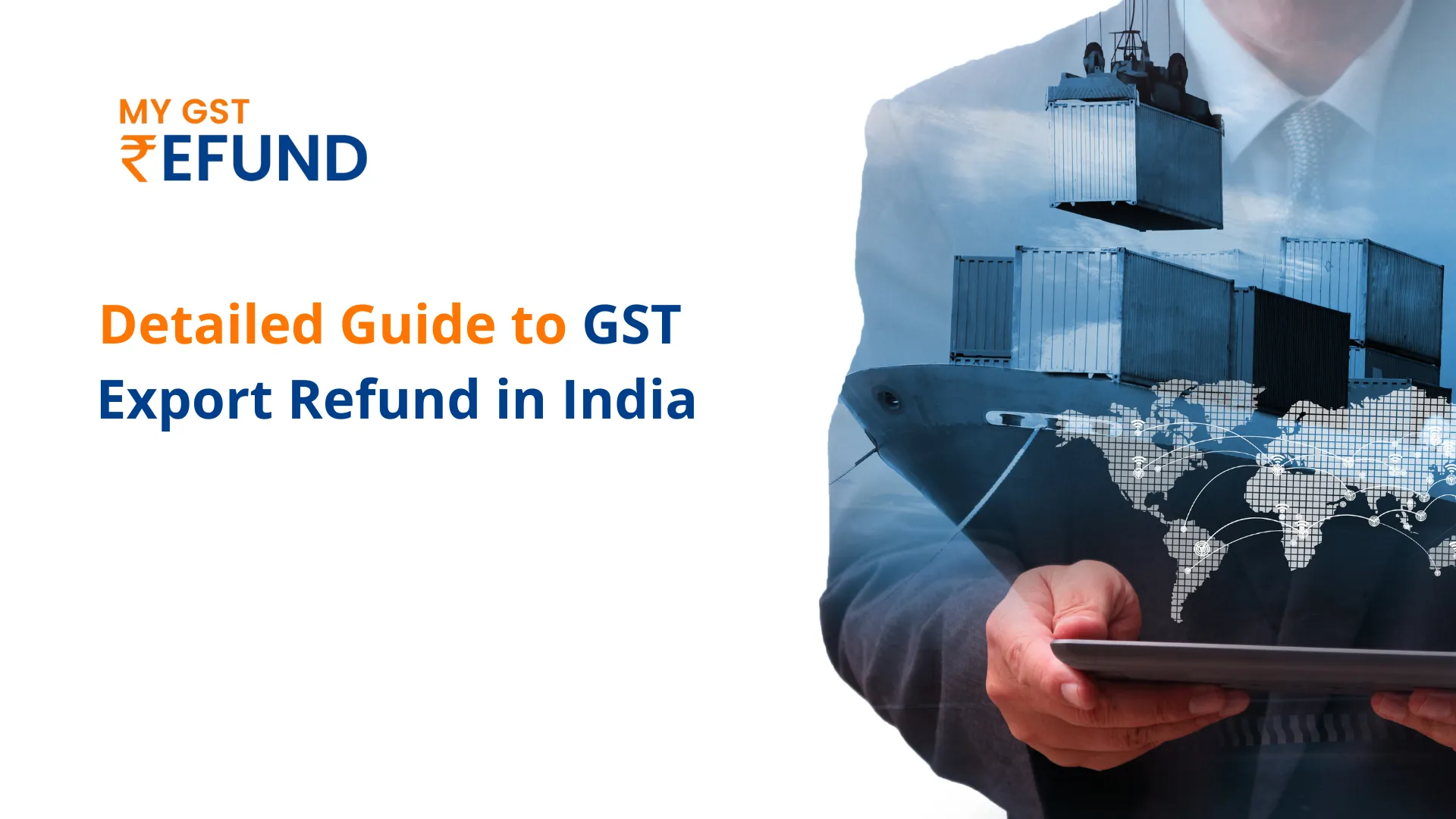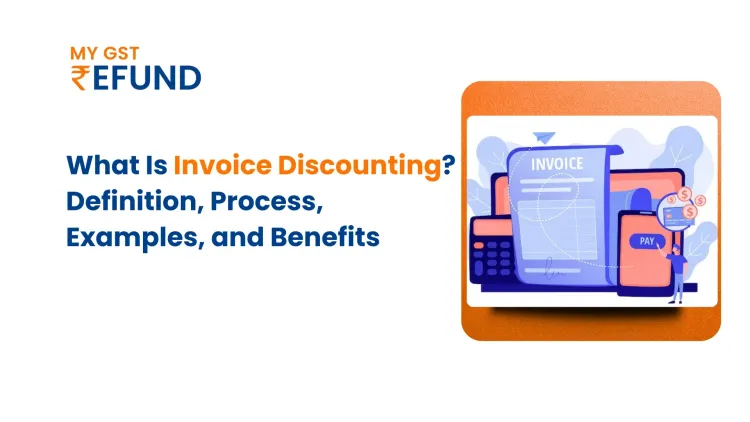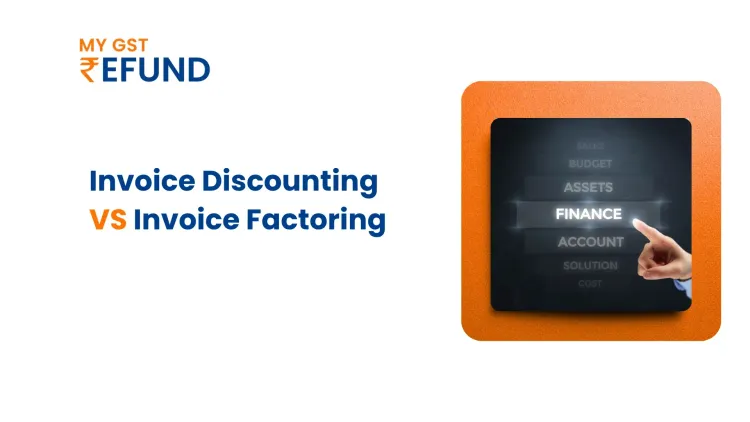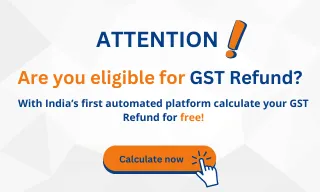Detailed Guide to GST Export Refund in India
Understanding the Goods and Services Tax (GST) system with specifics to the refund for export of goods can be overwhelming. This manual is useful for the experienced as well as those who are just starting off. It will enable you to optimize your GST export refund claims in India.
In this detailed article, we will look closely at the GST export refund. You'll learn about its importance, who can get it, the types of refunds, and what documents you need. By the end, you'll know how to make the most of your refund claims and improve your export work.
Key Takeaways
Read about the basic principles of the GST export refund in India and its relevance to the business activities within the country
- Figure out the qualification requirements and the different classifications of GST export refunds one can apply for.
- Study the necessary documentation that should be available in order to secure a successful GST export refund claim.
- Analyze the step-by-step claiming procedure for GST export refunds, along with the typical errors one must be aware of
- Gain insights into the GST refund process for exporters of goods and services
What is GST Export Refund?
The GST export refund is key for businesses trading across borders. It lets them get back the goods and services tax (GST) they paid on inputs and input services. This helps them manage their cash flow better and stay competitive worldwide.
Businesses exporting goods or services can claim back GST on inputs. This refund is called the GST export refund.
Importance of GST Export Refund
- The GST refund for export is important for India's export sector. It helps exporters get back GST costs, improving their cash flow and profits. This boosts India's exports and strengthens its global trade position.
"The GST export refund is a game-changer for Indian exporters, providing them with much-needed financial relief and helping them stay competitive in international markets."
It's crucial for businesses trading across borders to understand the GST refund claim process. This way, they can maximise their financial gains and help India's export economy grow.
Eligibility Criteria for GST Export Refund
To get a GST export refund in India, businesses need to meet certain rules set by tax authorities. This refund is key for exporters. It helps them get back the GST they paid on inputs for exported goods or services. This makes their products more competitive worldwide.
The main rules for getting a GST export refund are:
- The business must be registered under the GST regime.
- The business must have completed the export of goods or services.
- The business must have paid the applicable GST on the inputs used in the exported products or services.
- The business must have filed their GST returns on time and submitted the required documentation to claim the refund.
Exporters need to know and follow these rules for a smooth GST refund process. By doing so, they can get the most out of their GST refund for exporters. This helps improve their By following these rules, exporters can have a smooth GST refund process for exporters. This way, they can get the most financial benefits from the GST export refund scheme.
Read More: What is the Duty Drawback Scheme for export: Eligibility and Types
Types of GST Export Refunds
In India, there are two main types of GST export refunds. These are the refund of unutilised input tax credit (ITC) and the refund of tax paid on supplies.
Refund of Unutilised Input Tax Credit (Export under LUT)
Exporters can claim a refund for GST paid on business inputs. This encompasses raw materials, goods, or services. It is beneficial to businesses that have input tax-paid goods and services and do not sell them domestically. Refunding this amount enhances the cash flow and helps to control the working capital more efficiently.
Refund of Tax Paid on Supplies (Export with Payment of Tax)
This refund covers GST paid on exported goods or services. It makes sure exported products or services are zero-rated, which means they're GST-free. This makes them more competitive globally. Exporters can get this refund to recover GST paid on exported supplies.
It's important for exporters to know the difference between these refunds. This knowledge helps them make the most of their refund claims and improve cash flow. By understanding the eligibility and process for each, businesses can fully benefit from the GST export refund system.
Documents Required for GST Export Refund
To claim the GST export refund, businesses need to submit certain documents. These documents are vital for the refund process. They help ensure the refund is given out smoothly and successfully. Let's look at the main documents needed for the GST refund on exports.
- GST returns: Businesses must provide their GST returns, including the details of the exported goods or services.
- Shipping bills or bills of export: These documents prove the export transaction and are key for the refund claim.
- Bank realization certificates: Exporters must submit certificates that confirm the export proceeds were realised in their bank accounts.
- Purchase invoices: Copies of the invoices for the exported goods or services are needed as supporting documents.
Other supporting documents: Depending on the refund type and export nature, extra documents like export promotion council certificates, insurance documents, or transportation documents might be needed.
It's important to make sure all required documents are ready for a successful GST refund process for export and GST refund claims. Paying close attention to detail and submitting the documents on time can greatly help the refund process.
Exporters who fulfil the documentation requirements and adhere to the appropriate procedures stand a better chance of obtaining the GST refund on their exports.
GST Export Refund Process
Understanding the GST export refund process can be tricky. But knowing the steps can help exporters get their refunds. The process includes filing an application and getting the refund from the GST authorities.
Step-by-Step Guide
To get a GST refund for exports, exporters need to follow these steps:
- File the refund application: Exporters must file their GST refund claim online. They need to provide all details and supporting documents.
- Submission of documents: Exporters must submit all necessary documents. This includes export invoices, shipping bills, and other proofs.
- GST authority review: The GST authorities will review the application and documents. They check if the claim is valid.
- Refund processing: If approved, the GST authorities start the refund process. The exporter will get the refund amount as agreed.
It's important for exporters to know the GST refund process for exporters and the GST refund process for export. This knowledge helps them navigate the system well and get their refunds smoothly.
"The key to a successful GST export refund claim lies in meticulous preparation and adherence to the prescribed process."
Timelines for GST Export Refund
The GST refund process for exports in India follows strict timelines set by the GST Act. Exporters need to know these deadlines to get their GST refunds on time. Understanding the refund process and its time frames helps businesses manage their finances better and avoid delays.
Following these timelines is key for exporters to get their GST refunds efficiently. Being informed and proactive helps businesses avoid delays and keep their finances flowing smoothly.
Common Mistakes to Avoid
Getting a GST export refund can be tricky. Businesses often face problems. Knowing the common mistakes helps avoid them. This section will guide exporters on how to protect their GST refund claims.
1. Incomplete or Inaccurate Documentation
One big reason for delayed or rejected refunds is bad documentation. Exporters must provide all needed documents, like invoices and shipping bills. These must be complete and correct.
2. Missed Deadlines
It's vital to file GST refund claims on time. The rules have strict deadlines. Businesses must watch these deadlines closely to avoid delays or rejections.
3. Errors in Refund Calculation
Figuring out the right GST refund amount can be hard. Even small mistakes can cause problems. Exporters should double-check their calculations to follow the rules.
4. Lack of Coordination
Good teamwork between departments is key for a smooth refund process. Businesses need to talk well and keep everyone informed. This helps the refund claim go smoothly.
By knowing these common mistakes, exporters can better handle the GST refund process. This ensures a successful GST refund claim and makes the most of the GST refund for exporters.
GST Export Refund for Export of Services
Claiming a GST refund for services exported is different from goods. Service exporters need to follow specific rules and steps. This ensures they get their refund correctly and follow the law.
Eligibility and Process
To get a GST refund for services exported, you must meet certain criteria:
- The services must be exported outside of India.
- The exporter must have received the payment in convertible foreign exchange.
- The exporter must have filed the necessary returns, like GSTR-1 and GSTR-3B, on time.
To claim the GST refund for services exported, follow these steps:
1. Submit the refund application in the form RFD-01.
2. Provide the required supporting documents, like invoices and bank certificates.
3. The GST authorities will check your claim.
4. They will then give you the refund, either in your electronic cash ledger or by direct bank transfer.
Exporters must keep accurate records and submit the right documents. This makes the GST refund export of services process smooth. Knowing the GST refund on export of services rules well helps them get the most from their refund.
GST Refund Claim on Export
Exporters in India can claim GST refunds on their exports. This can greatly increase their financial gains. However, the process of claiming GST refunds is complex and needs careful attention. This guide aims to help exporters understand and navigate the GST refund claim process effectively.
Types of GST Refunds for Exporters
Exporters can claim two main types of GST refunds:
- Refund of Unused Input Tax Credit: Exporters can get a refund for input tax credit (ITC) that they haven't used yet.
- Refund of Tax Paid on Supplies: They can also claim a refund for GST paid on exports.
GST Refund Claim Process
To claim a GST refund, exporters must follow these steps:
1. Make sure all necessary documents, like export invoices and shipping bills, are ready.
2. File the GST refund claim through the GST portal, either manually or via GSTR-1 return.
3. Wait for the GST authorities to process the refund, which usually takes 60 to 90 days.
4. Respond quickly to any queries or requests for more information from the GST authorities.
By following these steps carefully, exporters can make the most of their GST refund claim and GST refund for export returns.
GST Refund Process for Exporters
Exporters find the GST refund process challenging. However, there are ways to make it easier. By following best practices, exporters can save time and improve their cash flow.
Streamlining the Process
To make the GST refund process smoother, consider these tips:
1. Organize all necessary documents properly because invoices, shipping bills, as well as bank statements must be provisioned. Having them ready can speed up the refund application.
2. Apply for a refund as soon as you're eligible. Don't wait too long. This helps avoid delays.
3. Use digital tools like the GST portal to apply for refunds online. This can cut down processing time.
4. Get help from a GST expert or chartered accountant. They can guide you through the process. Their knowledge can make a big difference.
5. Keep track of the progress made in your refund application. In case there are any issues, do not hesitate to reach out to relevant bodies. This could help in speeding up the process.
By using these strategies, exporters can handle the GST refund process more efficiently. This improves their cash flow and business operations.
"Streamlining the GST refund process is crucial for exporters to maintain a healthy cash flow and focus on business growth."
Refund of ITC on Export
Getting a refund for unused input tax credit (ITC) is key in the GST export refund process. Exporters in India can get back the ITC they've built up. This boosts their cash flow and reduces the tax burden.
To get the ITC refund, exporters must meet some rules. They need to have exported goods or services outside India. The ITC they claim must be for these exports. Also, the ITC can't be used for paying domestic GST.
To claim the ITC refund, exporters must give the GST authorities the right documents.
Understanding the rules, what documents are needed, and how the refund is worked out helps exporters. They can then make the most of their ITC refund claims. This improves their financial health.
"Maximising the refund of ITC on exports can have a significant impact on an exporter's bottom line, helping them to reinvest in their business and stay competitive in global markets."
Challenges and Solutions
Dealing with the GST refund claim process can be tough for businesses, especially those involved in the GST refund process for exporters. Exporters might face delays, mistakes in documents, and problems with the electronic refund system. But, with the right approach, these issues can be solved, helping exporters get the most from their GST refunds.
Overcoming Processing Delays
One big problem is when tax authorities take too long to process refunds. To fix this, exporters need to make sure all documents are correct and on time. Keeping in touch with the tax department and following up on applications can speed things up.
Preventing Documentation Errors
Another common problem is mistakes in documents, which can block the GST refund claim process. Exporters should double-check all documents, like invoices and bank statements, to make sure they're right and follow GST rules. Getting help from tax experts can also reduce the chance of errors.
Navigating the Electronic Refund System
The electronic refund system has made things easier for gst refund process for exporters, but it also brings new challenges. Exporters need to get to know the online portal, understand what's needed, and keep up with any changes. Getting help from tech experts can make using the system easier.
By tackling these problems and finding the right solutions, exporters can make the gst refund claim process smoother. This way, they can get the most from their refunds and improve their business's cash flow.
Pro Tips: Plan Ahead and Easily Calculate Your GST Refund with Our Online GST Refund Calculator Tool!
Conclusion
The GST export refund is key for businesses trading across borders. It helps them get the most out of their financial returns. This guide has covered everything you need to know about the GST export refund in India.
It's important for businesses to keep up with GST refund rule changes. This way, they can fully benefit from this financial help. The GST refund claim for exporters is important for a strong export industry and India's economic growth.
By using the GST export refund, exporters can boost their market standing. They can also reinvest in their business and help India's trade success. Staying alert and proactive helps businesses get the most from their financial gains and grow globally.
FAQ
Q. What is GST Export Refund?
The GST export refund helps businesses that export goods or services. It allows them to get back the goods and services tax (GST) they paid on inputs. This refund helps improve their cash flow and competitiveness.
Q. Who is eligible for the GST Export Refund?
Businesses must be GST-registered and have exported goods or services. They must also have paid GST on inputs used. To claim the refund, they need to file GST returns and provide the necessary documents.
Q. What are the different types of GST export refunds?
There are two main types of GST export refunds. One is for unutilized input tax credit (ITC). The other is for tax paid on supplies. The first refund helps claim back GST on inputs. The second covers GST on exported goods or services.
Q. What documents are required to claim the GST export refund?
Businesses need to submit GST returns, shipping bills, and other documents. The exact documents depend on the type of export and refund being claimed.
Q. What is the process for claiming the GST Export Refund?
Claiming the GST export refund involves several steps. This includes filing the application, submitting documents, and following GST authorities' guidelines. It's important to meet the deadlines.
Q. What are the common mistakes to avoid when claiming the GST Export Refund?
Common mistakes include incomplete or wrong documents, missed deadlines, and errors in calculations. Exporters should avoid these to ensure a successful claim.
Q. How does the GST refund process differ for the export of services?
The process for services is different from that for goods. Exporters of services need to know the specific rules and steps for claiming a refund.
Q. How can exporters streamline the GST Refund Process?
Exporters can manage their refund applications and track their status. They can also follow best practices for a timely refund. This saves time and improves cash flow.
Q. How can exporters claim the refund of ITC on export?
Claiming the refund of unutilized input tax credit (ITC) is key. Exporters need to know the criteria, the required documents, and how to calculate the refund. This maximizes their refund and financial performance.
Also Read : GST Refund Process, Claim and Time Limit
Related Posts









